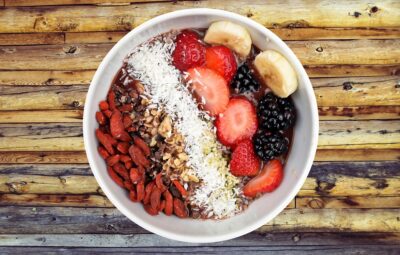Everyone knows how important it is to have a good coat. It’s advisable to wear a raincoat when you visit London, use plastic wrap to save today’s dinner for tomorrow’s lunch, and don a ski mask when you climb snow-capped mountains (or make an unscheduled withdrawal from someone else’s bank account) to protect yourself from the weather and possible danger. The skin is the largest and most impressive organ in the human body. It is made up of multiple layers of tissue and protects the body from infection, dehydration, and UV radiation.
The skin does more than just keep your organs inside your body; it also has other functions. This is a fabric that can be washed, stretched, and repaired by itself. It doesn’t need much care, and it lasts a long time. Your hair, nails, and sweat glands are also important parts of your body. Your skin is the largest organ in your body. It covers the top of a twin-size bed.
If you want to learn about your skin and impress your dermatologist, spend a Sunday afternoon doing some research. Did you know that studying skin can help you smell nicer and prevent wrinkles? In this chapter, you will learn how to take care of your own body wrapper.
The Protective Wrapper
Most people believe that the purpose of skin is to keep blood from oozing out of the body.
Skin plays an important role in holding the body together and performing several other functions. Your skin is the first line of defense against the outside world. It protects you from the elements and keeps you healthy. The skin acts as a barrier to keep water and nutrients inside your body and to keep undesirable elements out.
THE PRACTICAL SIDE OF BODY SCIENCE: SKINCARE
Everything you do to care for your skin, like putting on moisturizer or scrubbing with a sponge, is done to a layer of dead cells. The purpose of taking a shower in the morning is to remove the oldest and loosest skin cells, revealing more dead skin in the process. In this respect, people are similarly covered in a protective layer that is no longer alive.
But don’t give up on your skin just yet. Although your skin cells are dead, they still need proper upkeep. Here are some points to consider:
- Basic cleaning. Neatniks take heart—even dead skin needs a regular bath. If you don’t clean your dead skin cells, they will mix with sweat and dirt and create a delicious snack for the bacteria that live on your skin. Bacteria digesting a mixture produces a foul smell.
- Moisturizing. Ordinary soaps are harsh and drying. They strip away the natural oils in your skin. If you have dry skin, it is more likely that bacteria will slip through cracks and fissures in your skin. When your hands become dry, rub lotion on them to keep your defenses up, and use gentle cleansers on other parts of your body, such as your face.
- Exfoliation. Some people believe that scrubs and brushes are the best way to remove dead skin cells. Exfoliating your skin can make it feel better and look brighter temporarily, but if you overdo it you may end up with irritation and dryness. If you love exfoliating, only do it twice a week and moisturize afterward to make up for the natural oils you just removed.
How the Sun’s Rays Affect You
The Earth’s ozone layer prevents most of the sun’s harmful rays from reaching us, but the rays that do manage to penetrate the ozone – UVA and UVB – can cause damage to the skin. Blocking UV rays helps prevent conditions such as sunburn, photoaging, lowered immunity against infection, and skin cancers.
UVA rays, which make up the vast majority of UV radiation, have a wavelength that penetrates deep into the skin. The ultraviolet light generated by the sun creates reactive oxygen species that can interfere with the body’s DNA repair mechanism, potentially causing skin damage. UVA also inhibits the function of Langerhans cells, which are a type of immune cell that destroys harmful substances such as microorganisms or toxins. This prevents these substances from damaging the skin or penetrating deeper into the body. UVA rays also trigger a breakdown of collagen fibers. The result of not taking care of your skin is that it will develop wrinkles, sags, age spots, dry out, and become rough and thin.
UVB rays have a shorter wavelength than UVA rays and can penetrate the epidermis, causing sunburns, swelling, and most skin cancers by damaging DNA.
When the DNA in skin cells is damaged by UV radiation, it can cause the cells to grow out of control, resulting in skin cancer. Some skin cancers are more potent when caused by UVB rays. If you experience one or two blistering sunburns early on in life, your risk of developing melanoma later on significantly increases.
Vitamin D
Not long ago, vitamin D was considered unimportant and definitely not interesting. It is known that Vitamin D helps your body absorb calcium and prevents rickets. The problem of vitamin D deficiency was solved by adding a small amount of vitamin D to milk and some other foods. This vitamin was not given much importance until recently.
Vitamin D has become a popular supplement due to recent studies linking it to the prevention of cancer and other diseases. Vitamin D is no longer seen as simply a way to increase calcium levels. It is now understood to be a hormone that affects a variety of cell processes. It is not yet known if this new research is accurate or if it will be ignored like many other similar studies. Good reason to make sure your body has a solid dose of the stuff.
Vitamin D isn’t naturally present in many foods, but your skin can create this nutrient when you expose it to sunlight. The bottom layer of epidermal cells is responsible for this function. You don’t need to be in the sun for very long to maintain a healthy level of vitamin D. The rule of thumb is that you should expose yourself to direct sunlight for 10 or 15 minutes two or three times a week. This exposure should be to just part of your body, such as your face, hands, and arms. After that, it’s time to reach for the sunscreen.
The process of manufacturing vitamin D does not work as well when there is diffused sunlight, such as in the winter months in a Northern state. Not only does cloud cover obstruct the sun’s rays, but pollution does as well. This reduction in ultraviolet light exposure can be significant. For example, vitamin D synthesis from sunlight is not possible in Boston from November through February because the sunlight is too weak. To make up for the lack of vitamin D, you can take a supplement of 1,000 IU each day until summer comes again. This is approximately the same amount of vitamin D you would get from drinking 10 glasses of milk.
If you have brown or black skin, it is particularly important to supplement your diet with vitamin D. This is because the natural sunscreen in dark skin makes it more difficult for the body to synthesize vitamin D.
Building a Barrier
Your skin has 2 layers: the epidermis (outer layer) and dermis (inner layer).
The epidermis is your body’s first line of defense. It renews dead skin cells into a tough, protective layer.
Healthy skin cells reside at the bottom of your epidermis, about 1/4 of an inch deep. They happily reproduce and live a relatively stress-free life. As these cells mature, they produce a waterproof compound called keratin which allows them to face the outside world. Keratin is a biological wonder substance. The protein keratin is important for your nails and hair and is also found in other animals’ claws, horns, hooves, scales, shells, and beaks.
As new skin cells are produced, they push the older cells up to the surface of the skin. The trip lasts for a couple of weeks to a month. The average skin cell only lives for about a month before it reaches the surface of the skin and dies. These cells are filled with keratin, but none of the other cellular machinery is found in other types of cells. Approximately every month, you get a new set of skin cells.
The epidermis is the thin outer layer of your skin. The skin on your palms and feet is thicker than other parts of your body so that it can withstand more contact with the outside world.
New Combinations Offer More Protection
It’s interesting that combinations of various antioxidants have been found to have synergistic effects, yielding formulations that are more beneficial than any of the individual compounds used alone. When several antioxidants are combined in one skin care product, studies have shown that the benefits to the skin may be greater, and the photoprotective effect increases.
It is not only sun exposure that causes accelerated skin aging. Stress can damage the skin and other body parts. Reducing stress may help improve skin conditions.
In a study where participants were not aware of what they were taking, and half were given a placebo, a preparation containing Indian gooseberry and ashwagandha was shown to inhibit enzymes that break down collagen by 54% and those that break down hyaluronic acid by 86%.
Ashwagandha not only helps to protect the skin against stress but also helps to improve stress-related health conditions. A group of 98 people who are constantly stressed was chosen at random to either receive a standardized extract of ashwagandha or a placebo for 60 days in a trial where neither the participants nor the researchers knew who was receiving which treatment. They were either given 125 mg once or twice a day, 250 mg twice a day, or a placebo. The subject’s stress levels were monitored throughout the experiment, with blood pressure readings taken at the start and finish of the study.
The researchers found that the groups who took ashwagandha had reduced levels of stress and anxiety, as well as lower blood pressure levels. About 62% fewer people in the group who received the lowest dose of 125 mg once a day felt anxious compared to the group who received the placebo. Even more people in the other two groups felt less anxious. The group receiving the daily dose of 125 mg of the supplement showed significant reductions in cortisol levels (14.5%) and increases in DHEA (13.2%), compared to the other two groups. All three groups taking ashwagandha had a lower level of C-reactive protein, which is a measure of inflammation.
The researchers found that taking ashwagandha daily can help reduce stress and anxiety with no adverse side effects.
Polypodium leucotomos is a recently discovered plant that has been combined with a patented form of Phyllanthus Emblica ( from the Indian gooseberry) and ashwagandha— a medicinal herb that has been used for thousands of years by Ayurvedic practitioners. As an adaptogen, ashwagandha can help to relieve the damage that emotional stress can inflict on the skin.
Summary
Most of us do not realize how quickly exposure to the sun’s rays can age our skin. Just ten minutes of intentional sun exposure every day is the equivalent of over an hour of exposure every week.
It’s important to defend yourself from the sun to prevent skin cancer, skin aging, and a weakened immune system. We often don’t apply sunscreen as well as we should.







